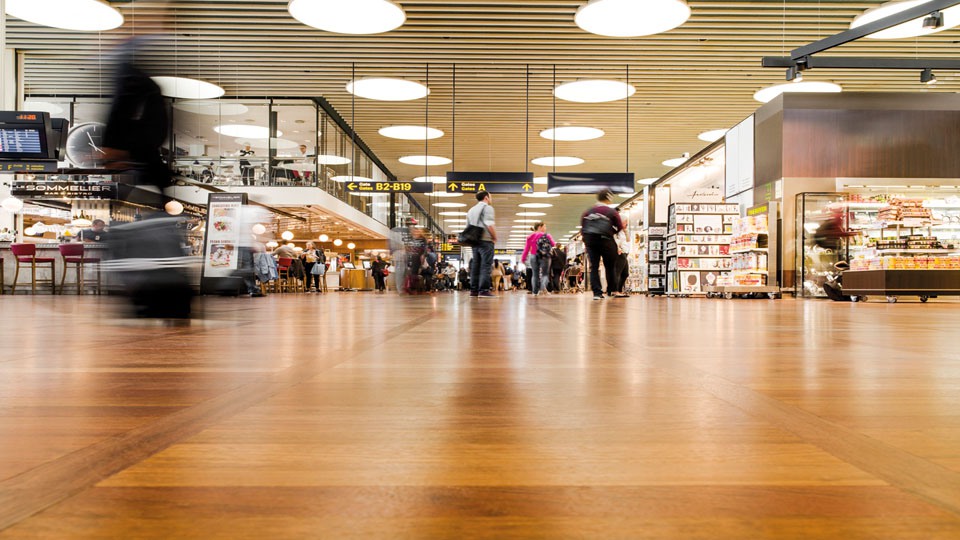
Increasing resource efficiency in the Swedish flooring industry through floor refinishing
Lengthening the service lifetime of products before being disposed could be an effective solution in achieving reduced impact on climate change and improved resource use. In the flooring industry, floor refinishing has been part of the business model for a long time. But floor owners and other stakeholders in the industry do not always recognize that floor refinishing is a viable alternative to installing new flooring.
This results in that flooring which technically can be refinished for continued use is often disposed and replaced by new flooring. If the share of refinished flooring is increased, the impact on climate change and resource use is expected to be significantly improved. The Swedish flooring market has great potential for refinishing services with millions of square meters of installed flooring.
The purpose of this project was primarily to generate information for stakeholders in the flooring industry about resource efficiency and the impact on climate change as a result of floor refinishing in Sweden. In addition, the aim was to identify barriers which prevent floor refinishing and propose potential actions for the industry to overcome these barriers. The project further aims to increase the knowledge base among stakeholders in the industry regarding the environmental impact of floor refinishing and whether it can lead to greenhouse gas emissions savings and reduced resource use compared to installation of new flooring. The scope of the project was the Swedish flooring market with specific focuses on commercial properties. The project has been divided in two parts: Life cycle assessment and roadmap.
Life cycle assessment
In the first part the environmental impact from refinishing hardwood and resilient flooring has been investigated through performing a life cycle assessment. The outcome has been compared to the impact from producing and installing new flooring in terms of climate change and resource use. In addition, the result was used as proof of concept that floor refinishing can reduce the impact on climate change and minimize resource use compared to producing and installing new flooring.
The result of the first part of this project shows the following:
- The main impact on the environment as a result of floor refinishing in commercial properties is caused by production of raw materials used to produce products used for refinishing (primer and varnish) and its end of life treatment. Sanding, application of refinishing products, consumables, and other activities related to refinishing has a comparably low impact.
- Floor refinishing in commercial properties can significantly reduce the impact on climate change and improve resource use compared to production and installation of new flooring. The study shows that floor refinishing in most cases can reduce greenhouse gas emissions by more than 75% compared to new flooring. The main reason is that refinishing enables continued use of existing flooring by using a relatively small amount of product as well as it needs limited processing compared to the requirements for new flooring. Roadmap In the second part of this project a roadmap was developed.
A roadmap
A roadmap is a strategic plan that defines desired outcome and outlines important actions to overcome the barriers that separates the current state from the desired outcome. The roadmap in this project has been developed together with stakeholders from the flooring industry such as material suppliers, property owners, architects and contractors.
Important insights from the project
Barriers that stand between the current and desired position are:
- Lack of technical, economic, and environmental information about refinishing within the industry.
- The prevailing business model in the construction industry enables contractors to earn more money from selling new products than selling refinishing as a service.
- The social norm demands new installations of products such as kitchen, bathrooms and new flooring and it impacts pricing in negotiations.
- Technical know-how such as what criteria to evaluate the potential of floor refinishing. Currently this relies on the craftsman’s experience which takes years to acquire.
- Environmental requirements compete with one another, for example acoustic requirement in open office landscapes makes it difficult to retain hardwood and resilient flooring.
- Environmental assessment systems today focus on new products rather than reusing and refinishing existing products.
Actions to overcome the identified barriers:
- Enhanced knowledge and information sharing. Several barriers can be overcome through information and enhanced understanding of which floorings can be refinished, what the cost and time for that would be and the climate benefits. Communicating results from life cycle assessments via guidebooks, via industry associations, or via the environmental assessment systems that are operating in Sweden are important actions.
- New business models that support circular economy. The current business model in the construction industry is a barrier where selling building materials is a good source of income that contradicts refinishing services. One way of changing this behavior would be to develop policy instruments targeting professionals in the refinishing business and other labor-intensive fields.
- Further development of maintenance services. The floor owner lacks information and knowledge about floor maintenance. This may affect future opportunities for refinishing since a poorly maintained floor may not be possible to save and refinish. Actions that provide digital solutions such as maintenance plans with reminders for the floor owner could help overcoming these barriers. Other action would be to offer maintenance as a service or to offer flooring on a lease agreement.
Project facts
- Increasing resource efficiency in the Swedish flooring industry through floor refinishing
- Budget: 800 000 SEK
- Financed by: Projektet är samfinansierat av SIVL och Bona AB
- Partner: Bona AB
- Period: 2019 - 2020
Contact
Want to know more about IVL's services and offers? Enter your email address and choose which area you want to know more about, and we will get back to you.
NOTE! For questions about vacancies and thesis work, go to the Careers
tab in the main menu.
